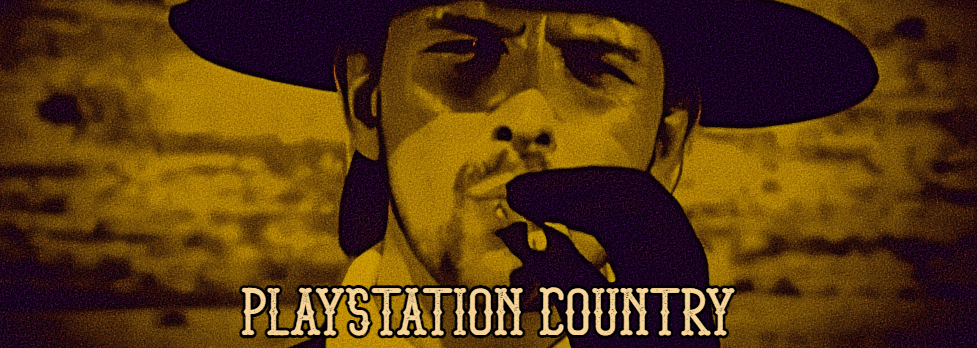Byte Barrel have returned with a sequel to their retro FPS Forgive Me Father. Whilst there are a few tweaks around character progression, the formula remains largely the same with a smart, atmospheric look. Whilst the story is told by some unconvincing voice acting, the combat has a decent tempo and solid gunplay.
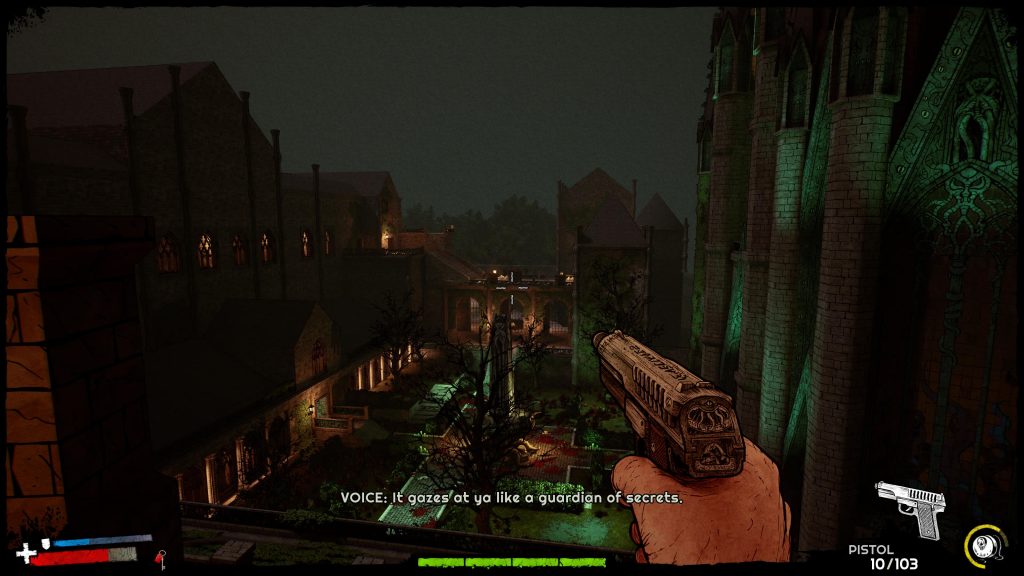 The multiple protagonists of the first game are slimmed down to just the Priest. On the one hand, that allows for a more focused story but it leads to a lot of gravelly narration. His dialogue is written in a dialect that certainly tries to hard. Letters are dropped from words frequently and it just doesn’t sound natural. His tone of voice rarely changes and it lacks an emotional punch. Much of the story is told in text clippings which, whilst they do flesh out the world, it can feel disconnected from the bricks and mortar you traverse.
The multiple protagonists of the first game are slimmed down to just the Priest. On the one hand, that allows for a more focused story but it leads to a lot of gravelly narration. His dialogue is written in a dialect that certainly tries to hard. Letters are dropped from words frequently and it just doesn’t sound natural. His tone of voice rarely changes and it lacks an emotional punch. Much of the story is told in text clippings which, whilst they do flesh out the world, it can feel disconnected from the bricks and mortar you traverse.
The Priest wants to regain his sanity, languishing in an asylum of neglected patients. Whilst the tale attempts to be introspective with some unknowable horrors attached, it doesn’t really grab me. We do learn more of his history, the wrongs he’s committed and the dilemmas he’s faced. Unfortunately, that leads to some binary choices which effectively influence which flavour of ending you end up with.
Forgive Me Father 2 has a striking comic book style that really hits. The bold black lines make everything stand out and the murky green palette offers some moody atmosphere. The Lovecraftian element does lead to some impressive, otherworldly enemy designs. Geometrically, it’s very boxy. That does make for clearly defined areas. Feedback on weapons is good with blood spurts and muzzle flashes. When doors are unlocked, the way ahead is clearly demonstrated and that’s appreciated. Darkness is a factor which does require a pocket watch to be wound up regularly. Whilst it’s not essential in all levels, it does slow me down when entering new areas.
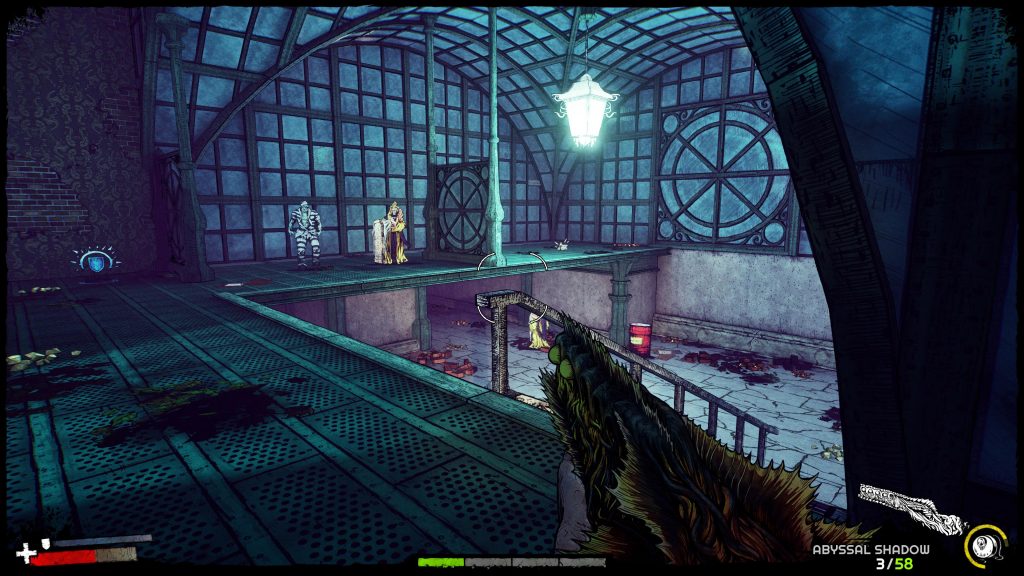 The score maintains a grim ambience that fits well. During combat encounters, it’s shoved aside for a more metal soundtrack but it does transition nicely between the two. I don’t have a lot to say about the gunfire but the enemy barks are distinctive and do telegraph what you’re going to be up against. I did run into a ghastly audio glitch that turned most noise into harsh static. I was quickly remedied by restarting the game. Moments like that were rare. Checkpoints are frequently placed so I didn’t lose out on much progress. Performance can be unsteady. Whilst it aims for a smooth frame-rate, I could see it struggling. It’s not a deal breaker but certainly noticeable.
The score maintains a grim ambience that fits well. During combat encounters, it’s shoved aside for a more metal soundtrack but it does transition nicely between the two. I don’t have a lot to say about the gunfire but the enemy barks are distinctive and do telegraph what you’re going to be up against. I did run into a ghastly audio glitch that turned most noise into harsh static. I was quickly remedied by restarting the game. Moments like that were rare. Checkpoints are frequently placed so I didn’t lose out on much progress. Performance can be unsteady. Whilst it aims for a smooth frame-rate, I could see it struggling. It’s not a deal breaker but certainly noticeable.
Combat is not quite at the same tempo of those old 90’s shooters. Movement’s a little slower and enemies do tend to come at you in packs. You’ll often hear them before they start shooting and there’s a couple of occasions where you can get the drop on them. You begin fighting human opponents but each new chapter introduces more grotesque foes. The vast majority of them rely on projectiles for attacks which can give you a chance to skilfully avoid damage. That said, there’s plenty of situations where damage is inevitable. Being locked in a room with a mob just invites the trading for hits.
The original game had a skill tree which has been much simplified. Rather than upgrading character skills, you are now upgrading weapons using tokens. There’s an arsenal of twenty five that does become well-rounded. It leans more into the unknown as you progress from standard shotguns to handheld monstrosities. Again, I think the design of them is good, although not all of the weapons click with me.
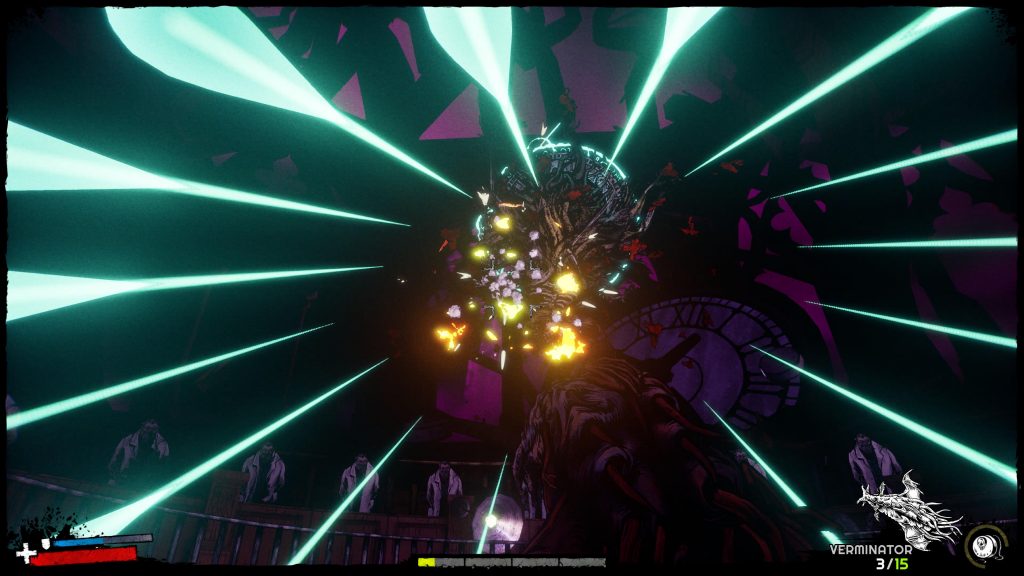 I found some weapon slots became redundant with my melee choice rarely used in combat. It’s handy against the lowest fodder but quickly loses out to any other firearm. I tend to use them as a bullet-free way to smash clocks or item pustules. The rest of them all have their uses. I tend to favour fire rate over anything that requires a charge or has a lengthy reload. The further you go down the upgrade path, weapons are more damaging but tend to consume more ammo. Whilst I rarely ran completely dry, I came close to the limit. I consider that decent balance, even though I preferred to keep a bog standard rifle at the ready.
I found some weapon slots became redundant with my melee choice rarely used in combat. It’s handy against the lowest fodder but quickly loses out to any other firearm. I tend to use them as a bullet-free way to smash clocks or item pustules. The rest of them all have their uses. I tend to favour fire rate over anything that requires a charge or has a lengthy reload. The further you go down the upgrade path, weapons are more damaging but tend to consume more ammo. Whilst I rarely ran completely dry, I came close to the limit. I consider that decent balance, even though I preferred to keep a bog standard rifle at the ready.
There’s also passive and active skills you can pick up by completing objectives within levels. There’s plenty to spend your cash on and can help cater towards a specific style of play. I tended to favour ones that gave me extra ammo and I took life leaching as an active ability. I found it very helpful to keep me in the fight but the monochrome effect it triggers makes enemies a little harder to see. Rather than up the contrast, a noir filter is pasted over the existing visuals so enemies don’t pop as well.
Whilst I’m not big on the movement, there are boss fights that show that, despite it being a little trapped in a lower gear, it can be enough. Outside of your default run speed, you have a jump to traverse areas with. Platforming is never too complicated and the obligatory yellow paint will show you what ledges or boxes are necessary to climb.
With five chapters to play through, it’s a longer game than I was expecting. Typically, there’s well over a hundred enemies to slay and you’re rated on completion. Locations feel diverse and I was relieved to finally see the sky in some of them. Mostly, time is spent indoors but things progress from rundown dockyards to opulent, grand halls. It can be overwhelming, even on normal difficulty. I learned to expect the mob and look towards crowd control.
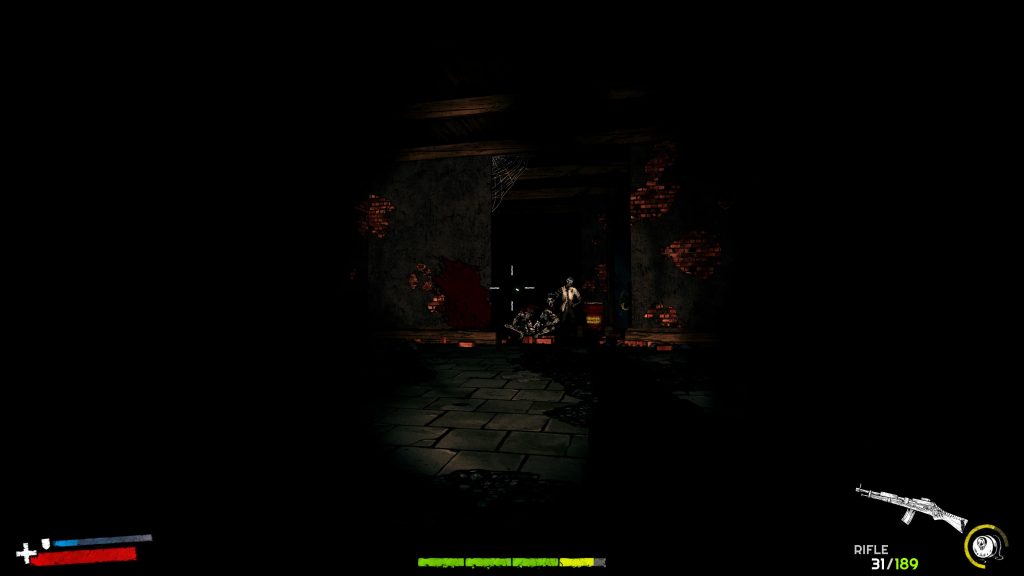 Clocks are the main collectable and they do have a telltale cuckoo to indicate when one is nearby. I do think the home stretch relies on branching paths or switch hunting. The latter can be frustrating and time consuming. Besides that, I didn’t run into many obstacles. For the most part, pacing was kept steady. Most of the proceedings can feel pretty linear with the occasional secret area tucked away.
Clocks are the main collectable and they do have a telltale cuckoo to indicate when one is nearby. I do think the home stretch relies on branching paths or switch hunting. The latter can be frustrating and time consuming. Besides that, I didn’t run into many obstacles. For the most part, pacing was kept steady. Most of the proceedings can feel pretty linear with the occasional secret area tucked away.
I don’t quite think the Lovecraftian horror lands but it does deliver a gloomy look. The Priest’s narration falls flat for me but the rest of the presentation feels polished. Guns provide good feedback and, whilst your movement options are little limited, the boss fights showcase that they are acceptable. There’s a diverse campaign on offer and, for the most part, the pace stays constant. Forgive Me Father 2 is a capable addition to the genre, despite a couple of shortcomings.
+ Sold gunplay.
+ Varied level locations.
+ Diverse selection of weapons.
- I felt the movement was limiting.
- Hunting for switches and keys can get stale.
- Performance is a little uneven.
